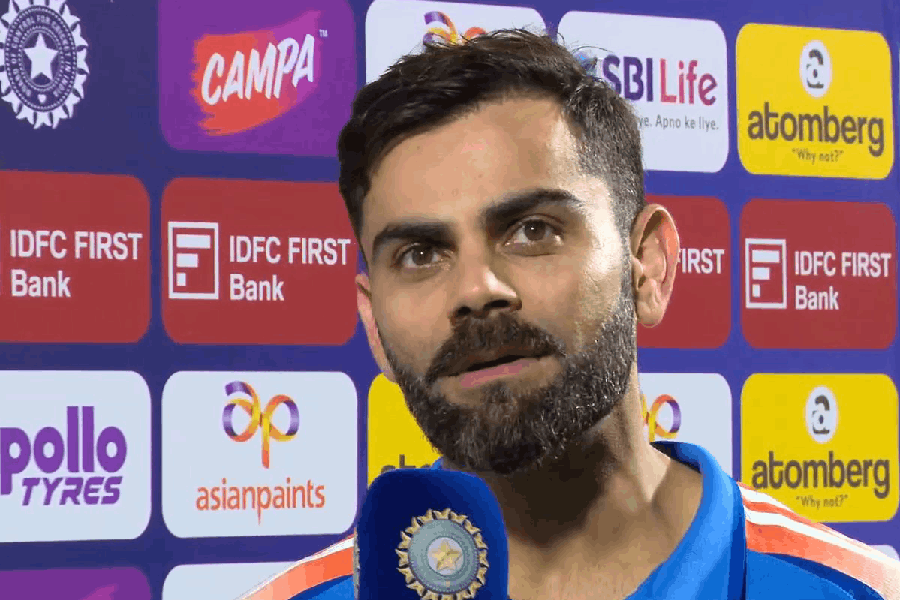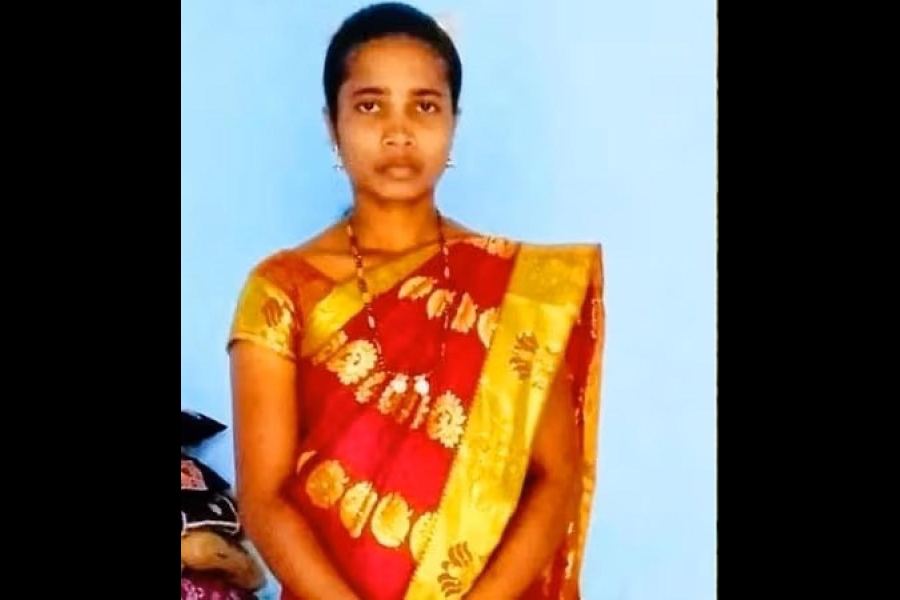Imtiaz Ali forays into biopic territory with Amar Singh Chamkila. Chronicling the dizzying rise and tragic end of ’80s Punjabi singer Amar Singh Chamkila, the film stars Diljit Dosanjh in the title role and has Parineeti Chopra playing Chamkila’s wife Amarjot.
Set to release on Netflix on April 12, Amar Singh Chamkila has intriguing subject and narrative experimentation, with Imtiaz joining hands with frequent collaborator A.R. Rahman for this musical. t2 caught up with the filmmaker to know more.
What was your introduction to the legend of Amar Singh Chamkila?
I was in Punjab for a shoot, and that is when I started hearing about this local grassroots superstar called Chamkila, which the rest of India was unaware of and even I was not aware of. Gradually, I figured that the musician every hardcore Punjabi would listen to was Chamkila. I was intrigued and wanted to know more.
I was told more about Chamkila by my production head Rajesh Sharma. Eventually, I learned about the circumstances and the ironic situations in his life and that he belonged to the infamous ‘27 club’ (of musicians who had died at age 27). About five years ago, a gentleman called Harpreet Singh came to me with the rights to make a film on Chamkila. That is how it all started.
Was there a singular aspect of Chamkila’s life that intrigued you the most?
There were two things. One was that his life kind of echoed the life of Punjab at that time, which means the constant presence of opposites — exuberance, fame and glory as well as violence and destruction.
Chamkila was extremely popular but he was also extremely hunted. His life was always under threat and he met a terrible end. In the same way, Punjab is so prolific in terms of spirituality, music, the Green Revolution and every kind of advancement but it has also been marred by violence, as far back as Alexander’s invasion. I feel that Punjab and Chamkila mirrored each other.
Chamkila’s career high was one of the darkest phases in Punjab’s history, which was the 1980s. That was the time when Punjab was suffering the most but Chamkila’s music was also selling the most. Somehow, by telling one story, one ends up telling the other story, which is the larger story of Punjab and that is reflected in the film’s song Ishq mitaye.
Also, the thing that leapt out to me was the question that who is one to decide what is good for people to hear or watch. Who wields that authority? Chamkila was popular but also criticised a lot for his bold lyrics. We have always had this conversation about censorship and it is something that remains relevant even now. Chamkila represented that question.

(L-R) Imtiaz Ali, A.R. Rahman, Diljit Dosanjh and Parineeti Chopra
It was Chamkila’s music that provided succour to Punjab when it was battling insurgency...
Absolutely! He didn’t write songs about the large-scale violence, the killings or the communal disharmony of that time. He only wrote songs that he felt would be entertaining for his listeners, focusing on small-level village intrigue and chhed-chhad bordering on the ribald.
Chamkila knew about the stress that the people of the state were going through and he felt that he didn’t need to remind them of that. As an artiste, he felt that he should entertain them and give them hope.
I believe that Harpreet Singh came to you with the rights to make a film on Chamkila because of how beautifully you depict Punjab in your films. Almost all your films have had a bit of Punjab in them. What is this connection that a Jamshedpur boy has with Punjab?
I wonder myself, I don’t have an answer to that. It is just that every time I go there, I feel very connected... and the people out there like me (smiles).
I don’t know whether you are calling Amar Singh Chamkila a biopic, but it is your first. Did the lack of experience hinder you in some way or did it feel liberating to tell a story outside the boxes that we tend to put genres into?
It was a unique, awesome and fresh experience for me because I did not rely on my old tools to make this film. Instead of imagining situations that would be suitable for cinema, I was investigating situations. I promised myself that I would not lie in this film, I would not manipulate facts and I would be as truthful to the matter as possible.
During our research on Chamkila, there were quite a few gaps because one did not know what exactly happened in a room where Chamkila was alone. I had to think from his point of view and rely on what material I had. This process of not imagining but insightfully looking at the life of this person introduced me to a different high.
Does Amar Singh Chamkila mark a shift for you as a filmmaker?
I don’t know whether it is a shift but it is a new experience and I hope that reflects in the film that we have made.
Music has been an integral part of all your films. In this film, many scenes and situations are narrated through music. What was the most exhilarating part of making the music for this film and reuniting with A.R. Rahman?
For me, there were two exhilarating points about the musicality of the film. One is that the original songs of Chamkila were sung by Diljit (Dosanjh) and Parineeti (Chopra) and they were shot live, as in what they sang during the shoot is what has gone directly into the film... it is not playback, it is live music. It happens in the West but in India, I don’t know when that happened last or whether it ever did.
That was an awesome, fun process for all of us. Firstly, we had to figure out how to do it. I cast Diljit and Parineeti because my actors needed to sing. I consider Diljit a singer first and then an actor and even Parineeti is a trained singer. She also practised a lot. On set, it was exhilarating to get to see live performances every day for free! (Laughs)
What was also thrilling was that Rahman sir has made six songs for this film which are not Chamkila’s songs. They play in the background and we decided to make this film different by giving it a musical theatre treatment. There are two songs in which people are singing directly to the camera. One of them, Naram kaalja, has already been released. It was an experiment and I am happy that the song is becoming popular.
The most exciting part was to shoot with 400 women who came from the villages of Punjab... untrained and untempered women coming on tractors to shoot. There was so much exuberance and josh and that was mind-blowing.
The song became bigger and bigger. From 30 seconds it became a minute and then two minutes and now it is the longest song in the film. This song was powered by the enthusiasm of Rahman and the women. We didn’t even have a choreographer. Can you believe that the executive producer had to come in and become the choreographer and do the dance steps?! (Laughs) We loved every moment of it.
Also, for these women, it became a sort of movement. Because many times, their fathers, brothers or other men in the family refused to let them come for the shoot and spend the night away. But these women rebelled and came. It became such a movement in that small area that it could have become a film on its own.
Diljit has a rockstar vibe on stage and screen. Did he have to cut back on that to get into the skin of Chamkila?
His personality was key to making this film. His experience of being a Punjabi and hailing from that particular area helped immensely. He is not a Punjabi from a big city... he is from the village and is very rooted.
What also helped was his attitude. Diljit never thought about himself. He never came in with the attitude of: ‘I am somebody’. He behaved like a nobody. Diljit is perhaps more popular than Chamkila ever was but he never carried that baggage. He was just an actor playing Chamkila and all that he has done for this film was out of his love for Chamkila.
When we spoke last, you said that no matter what medium you make a film for, you can’t help but think you are making it for the big screen. How did you make peace with the fact that Amar Singh Chamkila will be on a digital platform and millions will watch it on their mobile phone screens?
I told myself that since this time I am not making this film for the big screen, I will make it even more cinematic. I wanted to vengefully make a movie which is meant even more for the big screen (smiles). I always imagine everything playing on the big screen because that is
how my mechanism is. I didn’t change it. Let us see how we land but I am happy that we tried a new thing.
Which Imtiaz Ali film has the best music? Tell t2@abp.in










